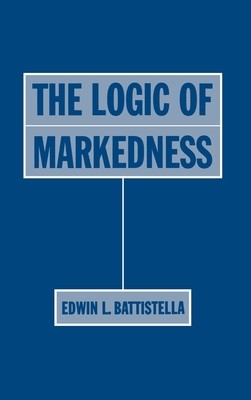
- We will send in 10–14 business days.
- Author: Edwin L Battistella
- Publisher: Oxford University Press, USA
- ISBN-10: 0195103947
- ISBN-13: 9780195103946
- Format: 16.4 x 24.3 x 2.1 cm, kieti viršeliai
- Language: English
- SAVE -10% with code: EXTRA
Reviews
Description
Theories of language espoused by linguists during much of this century have assumed that there is a hierarchy to the elements of language such that certain constructions, rules, and features are unmarked while others are marked; "play" for example, is unmarked or neutral, while "played" or "player" is marked. This opposition, referred to as markedness, is one of the concepts which both Chomskyan generative grammar and Jakobsonian structuralism appear to share, yet which each tradition has treated differently.
Battistella studies the historical development of the concept of markedness in the Prague School structuralism of Roman Jakobson, its importation into generative linguistics, and its subsequent development within Chomsky's "principles and parameters" framework. He traces how structuralist and generative linguistics have drawn on and expanded the notion of markedness, both as a means of characterizing linguistic constructs and as a theory of the innate language faculty.EXTRA 10 % discount with code: EXTRA
The promotion ends in 21d.14:27:11
The discount code is valid when purchasing from 10 €. Discounts do not stack.
- Author: Edwin L Battistella
- Publisher: Oxford University Press, USA
- ISBN-10: 0195103947
- ISBN-13: 9780195103946
- Format: 16.4 x 24.3 x 2.1 cm, kieti viršeliai
- Language: English English
Theories of language espoused by linguists during much of this century have assumed that there is a hierarchy to the elements of language such that certain constructions, rules, and features are unmarked while others are marked; "play" for example, is unmarked or neutral, while "played" or "player" is marked. This opposition, referred to as markedness, is one of the concepts which both Chomskyan generative grammar and Jakobsonian structuralism appear to share, yet which each tradition has treated differently.
Battistella studies the historical development of the concept of markedness in the Prague School structuralism of Roman Jakobson, its importation into generative linguistics, and its subsequent development within Chomsky's "principles and parameters" framework. He traces how structuralist and generative linguistics have drawn on and expanded the notion of markedness, both as a means of characterizing linguistic constructs and as a theory of the innate language faculty.

Reviews